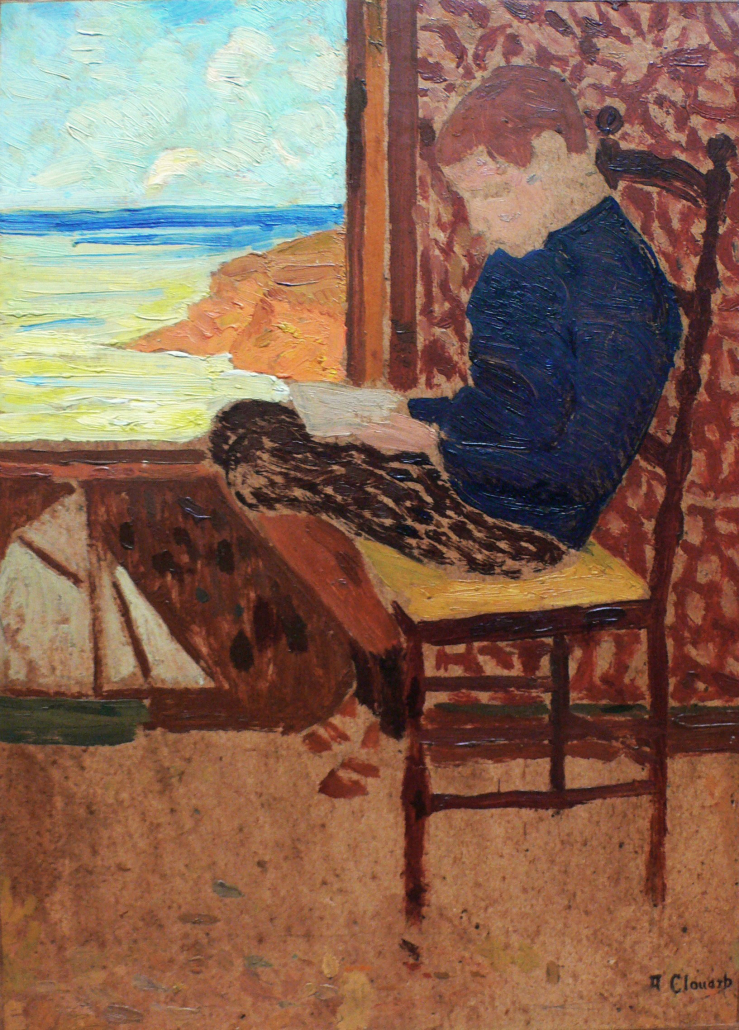Albert Clouard
1866 – 1952
French School
Joël à la Lecture, (Joël reading) study circa 1905
Oil on paper mounted on canvas
33,5x25cm
Atelier stamp lower right : A. Clouard. N° 102 of the monography and catalogue raisonné by Bruno Belleil, 1992.
Provenance: ex-collection Anne-Marie Clouard, the artist’s grandaughter.
« Pour l’enfant amoureux de cartes et d’estampes” Baudelaire.
Exhibitions:
1. Musée de la Maritime, Paris (final version, oil on canvas.), November 2006 – May 2007
In a remarkably parallel career to Gustave Caillebotte and his Impressionists, Clouard was not only a wealthy patron of the arts but one of the major talents of the Nabis Movement. A resident of Perros Guirec, Brittany, Clouard numbered his neighbor Maurice Denis and the painter Paul Sérusier among his closet friends. He enjoyed lifelong friendships with them, as well as sharing their artistic concerns. Clouard exhibited little during his lifetime. At the behest of Denis, he finally showed his work at the Salon des Indépendants in 1903 and thereafter at the Galerie Druet, home to the Nabis, but his public career ended in 1907. Clouard’s financial independance guaranteed his artistic independance as well, and the artist was free to perfect his pictorial language at leisure and in reclusion. A largely forgotten figure, it was only in 1992 that the French public re-discovered the extraordinary accomplishments of this magnificent painter, on the occasion of the publication of a monography, catalogue raisonné and the sudden availability of his work on the art market for the first time in nearly a century.
The present study is for one of Clouard’s most important compositions. It is a portrait of his only child, his son Joël, reading a book by his bedroom window. The painting is accompanied by a dedication, a quote by Baudelaire (one of Joëls favorite authors): “Pour l’enfant, amoureux de cartes et d’estampes…” (“for the child, lover of maps and prints…”). With its Japanese perspective, its decorative alternation of light and shade, and its reserves of unpainted surface the composition is a characteristic example of Gaugin’s Synthetism and the techniques of the Nabis School. The sketch is suggestive, poetic, haunting (close in many regards to Edouard Vuillard’s best work, a painter whom Clouard knew personally and greatly admired).
The darkness of the rich, backlit interior with a model sailboat on the floor gives way to a luminous view of a small harbor, and then the open sea. In the final painted version, the artist becomes even more specific: the viewer perceives a clipper ship in full sail placed on the gorgeous, infinite horizon. The metaphor suggests that Joël, through his intellectual curiosity and open-mindedness, will go forth one day, when ready, into the wide world. He will explore the vast horizons that lay beyond the material comfort and safety of his room.

